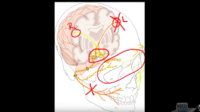The ABFM Family Medicine Board Exam can be a difficult board exam. While the pass rate was 97.9% in 2023, this is not an exam you should take lightly. In part, the exam is difficult because of the scope of information… covering many specialties is not easy, and Family Medicine physicians have to know significant detail. Below are sample Family Medicine Board Questions from the BoardVitals ABFM Board Review Question Bank.
Sample Family Medicine Board Questions
Question 1. Musculoskeletal and Sports Medicine QID 37656
Your patient is a 36 year old female recreational tennis player with elbow pain radiating down the posterior aspect of her forearm that has increased over the past two days. She has no medical problems. She takes a combination oral contraceptive. Family history is noncontributory. She does not use tobacco, alcohol, or recreational drugs. She recently began playing tennis on a USTA team that practices nightly. She is afebrile with normal vital signs. Examination reveals tenderness distal to the lateral epicondyle, with pain increased with wrist extension against resistance. She has increased pain with resisted supination. Which of the following is most appropriate for this patient?
A. Opioid analgesics
B. Corticosteroid injection
C. Counterforce bracing
D. Extracorporeal shock wave therapy
E. Strength training
Explanation:
Answer: E. Strength training.
This patient has a history and examination consistent with lateral epicondylitis, otherwise known as “tennis elbow.” Although there are multiple available treatment options, no single treatment is completely effective. Strength training, exercise, and stretching have all been shown to decrease pain in patients with tennis elbow. The elbow includes three articulations, two ligament complexes, four muscle groups, and three major nerves. Mechanical symptoms (including locking in extension or catching) usually indicate intra-articular pathology and neurologic symptoms (weakness or paresthesia) indicate nerve entrapment syndromes. A small minority of patients may require a diagnostic study. Treatment principles include RICE, and PMM: rest, elevation, compression, and elevation; and protection, medication and modalities (physical therapy.) Patients treated with NSAIDS who employed watchful waiting had greater improvement than patients who had injections of corticosteroids. A Cochrane review in 2013 stated that there was limited evidence from which to draw conclusions about treatment of lateral elbow pain with either topical or oral NSAIDS, although topical NSAIDs may help improve pain for up to 4 weeks. A single study showed that a corticosteroid injection had superior efficacy to physiotherapy at 6 weeks, and was less efficacious as 12 weeks. A study of 297 patients in 2012 showed that individuals who were treated with structured physical therapy had less pain and better function than patients treated with corticosteroid injections or NSAIDs. Use of counterforce bracing appears to relieve pain. No significant benefit from ECSWT has been demonstrated in patients with lateral epicondylitis.
Reference:
http://www.aafp.org/afp/2000/0201/p691.html http://emedicine.medscape.com/article/96969-medication#4 http://www.ucdenver.edu/academics/colleges/medicalschool/departments/familymed/education/fellowship/sportsmedfellow/Documents/MS%20exam.pdf
Question 2. Hospital Medicine QID 37509
Your patient is an 81 year old male with a history of hypertension, type 2 diabetes mellitus, hyperlipidemia, and congestive heart failure. He takes metformin, lisinopril, and pravastatin. He lives in a nursing home. He presents by ambulance to the emergency department for evaluation of new onset confusion. He appears acutely ill and confused about the date and place. His blood pressure is 90/60 mm Hg. His heart rate is 92 beats per minute and his respiratory rate is 22/minute. His temperature is 35 degrees Centigrade. SaO2 is 92%. He has crackles in his lung bases. Auscultation of the heart reveals a regular rhythm without murmur, rub, or gallop. Lower abdomen is tender without rebound or guarding. He wears an adult diaper for incontinence, and his intertriginous pelvic folds are red and excoriated with a rash pictured below. He has no cyanosis, clubbing, or edema. Hemoglobin is 8 g/dL. Hematocrit is 24%. White blood cell count is 18,000/mm^3. Platelets are 55,000/mm^3. Serum lactate is 42 mg/dL. Blood glucose is 160 mg/dL. BUN and creatinine are 30/2.0. Which of the following is appropriate for this patient?

A. Mechanical ventilation, CVP monitoring, Vancomycin and imipenem pending cultures, renal dose dopamine, and intensive insulin therapy targeted to normoglycemia.
B. Mechanical ventilation, vancomycin and imipenem pending cultures, add empiric treatment for systemic candidiasis, begin dopamine and insulin infusion.
C. Empiric antibiotics with coverage for systemic candidiasis, platelet and packed red blood cell transfusion.
D. Renal dose dopamine, transfuse PRBCs, platelets, empiric antibiotics with coverage for candidiasis, intensive insulin therapy.
E. Cultures, empiric antibiotics including coverage for disseminated candidiasis. Supplemental oxygen. Maintain blood pressure. Consider dobutamine.
Explanation:
Answer: E. Cultures, empiric antibiotics including coverage for disseminated candidiasis. Supplemental oxygen. Maintain blood pressure. Consider dobutamine.
This patient has a mean arterial pressure of 70 mm Hg and is breathing on his own. It is reasonable to add supplemental oxygen, and empiric antibiotics should be started immediately after obtaining clinically appropriate cultures. Because this patient has evidence of candida, disseminated candidiasis should be considered a potential source of infection. The Surviving Sepsis guidelines indicate that cultures should be done before antimicrobial therapy if there is no significant delay before the start of therapy. With respect to the other therapies, mechanical ventilation is not indicated at this time. Central venous pressure monitoring will be useful to determine if the patient has high filling pressures that may indicate a need for a cardiac inotrope. Renal dose dopamine is not recommended. Intensive insulin therapy is not recommended except in patients with a blood glucose level > 180 mg/dL. Platelet transfusions are not indicated unless the platelet count is less than 10,000/mm3, <20,000/mm^3 in patients at risk for bleeding, or at 50,000/mm3 in patients who are actively bleeding, or undergoing surgery or an invasive procedure. Routine red blood cell transfusions are not recommended in sepsis for hemoglobin above 7 g/dL.
References:
http://survivingsepsis.org/Guidelines/Documents/Initial%20Resus%20Table.pdf http://survivingsepsis.org/Guidelines/Documents/Hemodynamic%20Support%20Table.pdf
http://www.sccm.org/Documents/SSC-Guidelines.pdf http://www.idsociety.org/uploadedfiles/idsa/guidelines-patient_care/idsa_practice_guidelines/fever_and_infections/2013%20sepsis%20guidelines.pdf
Preparing for the Family Medicine board exam means finding the right resources. The BoardVitals Family Medicine board review question bank has been newly updated for 2024-2025. It now provides more than 2,850 ABFM board certification questions targeted to the latest ABFM Certification Exam Content Blueprint.
Along with expertly written sample questions, the BoardVitals Family Medicine Question Bank contains innovative technology to help you make the most of studying. Create quizzes with adaptive testing technology, which presents questions tailored to your current competency level. The Family medicine Question Bank also includes AI-powered risk assessment performance data, providing insight into your most at-risk subjects to optimize study efficiency.




